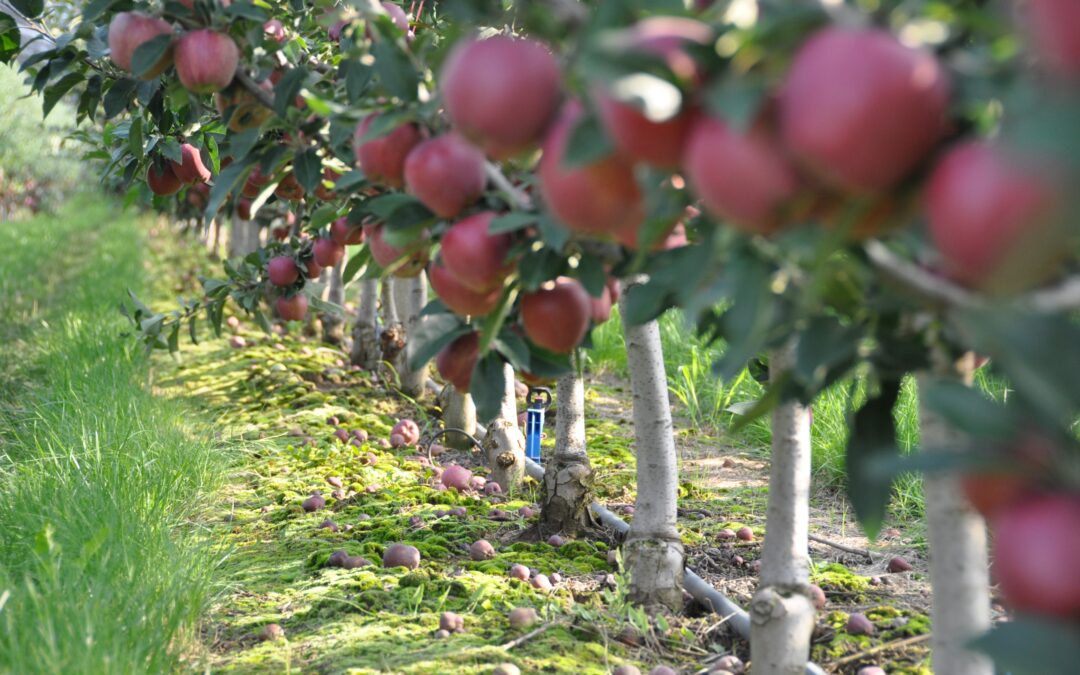Radiation (spring) frost typically occurs when a combination of cloudless nights with little or no wind, low air humidity, and sub-zero temperatures happens over an extended period. The damage from spring frosts can range from damaged buds or flowers, destroyed fruits, low quality of crops, to the complete destruction of trees, and can be devastating for farmers and the local economy.
Many plants can be damaged or destroyed by temperatures that drop to the freezing point and due to frost. Due to global climate change, more and more areas are threatened by this phenomenon. Frost damage can have a drastic effect on plants, which can lead to reduced yields or poor product quality.


The main role of frost protection is to prevent the temperature of the plant from falling below the critical level. Although there are several available methods of frost protection, growers must choose the most cost-effective and efficient way to protect fruit trees and vineyards from radiation frost.
Common methods used to protect fields and plantations from frost include smokers, wind machines, and propane burners. Of course, there are advantages and disadvantages to each method. The right choice depends on many factors such as topography, equipment costs, operating costs, and labor requirements.
The use of sprinklers is one of the most popular methods of frost protection due to its great efficiency and cost-effectiveness. Sprinkling plants is the most modern and at the same time the safest way of protection against frost and implies the creation of artificial rain. The use of this way of protecting plants from frost will lead to an increase in air humidity, mixing of the ground layer of air, an increase of the thermal conductivity of the soil, and supply of additional heat through water particles. This method does not increase the air temperature but protects the fruit from frost in such a way that the temperature of the crop itself is preserved and does not allow it to fall below the freezing point.
During the radiation frost, the crops are continuously sprayed above the canopy with water that turns into ice. The freezing process releases latent heat which creates a microclimate and heats the air near the trees. For every 1 gram of water, 80 calories of energy are released. Also, a thin layer of ice is formed on the leaves, which is constantly formed and melted, so that the water inside the plant cells will not freeze, and the air surrounding the plant will not fall significantly below the freezing point. The result is not only a protected orchard but also a spectacular sight of fruit trees surrounded by ice.
Frost protection with sprinklers requires the system to apply a consistent layer of water to the crop throughout the frost event until temperatures return to safe levels. The frost protection system should be activated when temperatures begin to fall below 2.5°C and switching off in the morning after frost when all the ice on the leaves and trees has melted.
Unlike irrigation systems that can irrigate different plots in shifts, frost protection systems must cover the entire orchard while maintaining a high flow rate. This results in high system costs, especially due to pumping, head control, and main lines. Here, targeted application of water instead of full coverage can make a huge difference.
To achieve cost-effective protection, it is advisable to design the system in such a way that the sprayers apply water only to the trees, and not between the rows of crops. This will reduce system costs by 30-40% compared to full coverage sprinklers.

Why Pulsar ™ frost protection?
Pulsar ™ is a unique micro-sprayer for pressure compensation with a low flow rate. It is applied at a rate of several pulses per minute so that Pulsar ™ creates a thin layer of ice on the trees, which releases latent heat and creates an effective barrier that protects against freezing temperatures.
The advantages of the Pulsar ™ trailer are:
- Effective frost protection: Delivers several pulses of water per minute, ensuring continuous watering over a large area for many hours.
- Water and energy efficiency: Specially designed to use less than 50% – 70% of the water required by full-coverage sprinkler systems, it protects larger areas with a given amount of water and saves energy consumption too.
- Lowest system cost: Pulse technology enables great water coverage with the lowest possible flow rate – lowering operating costs by up to 30% compared to other systems.
- Uniform water distribution, irrespective of topography: Achieves optimal results even with sloping terrain and long laterals due to a unique flow regulation mechanism.
- Low maintenance, high performance: Pulsar emitters are simple to install and are made to withstand agrochemicals and adverse weather conditions.
The economic consequences of frost damage vary from region to region, depending on the culture and location of the plot. Antifrost protection is a recognized and proven solution. The investment in such a system is not insignificant, so it is necessary to plan and design this system in detail and carefully, in terms of choosing the appropriate technology and equipment.
Our experts will provide you with all the information and help in choosing the ideal solution for your situation.

